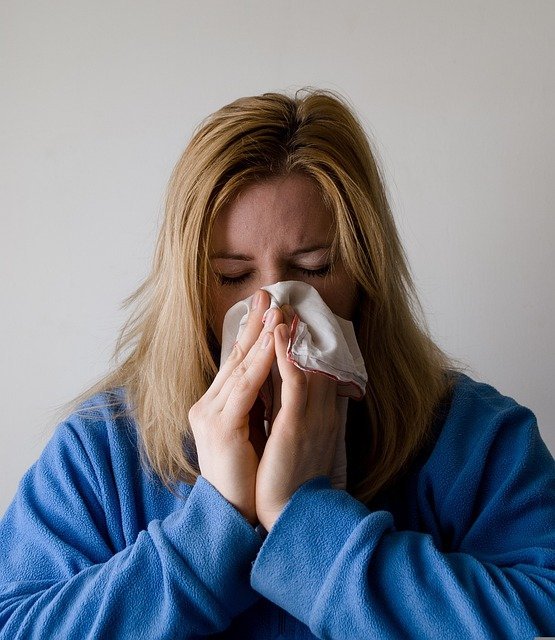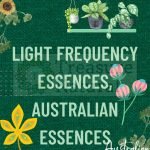
With the arrival of spring, allergies also return. But is it possible to prevent spring allergies with natural remedies? In most cases, yes! Let’s see what are the best remedies for pollen allergies.
When spring approaches, there are those who rejoice thinking about the days that are getting longer and the plants and flowers that bloom and those who immediately associate the arrival of summer with the problem of pollen allergy which, once again, does not will give peace. Watery eyes, recurrent sneezing, rhinitis and eczema are the annoying symptoms that very often appear in people who suffer from seasonal allergies.
Against spring allergies it is essential to act in prevention using, for example, some remedies considered “natural antihistamines” for their ability to inhibit histamine, a protein that our body produces when it is in contact with an allergen, or an external substance which is recognized as “foreign” to the organism and towards which there is a hypersensitivity. It is precisely the large release of histamine within the body that brings about the allergic symptoms we all know.
Nature undoubtedly comes to our aid with some plants and remedies that must be taken from the months preceding the critical period, always better after having heard the opinion of an expert, especially if you are used to taking drugs for allergies.
14 remedies to prevent and counteract the symptoms of spring allergies
To prevent spring allergies there are not only natural remedies but also some beneficial foods as histamine inhibitors. Let’s see what they are:
1. Ribes nigrum: the natural antihistamine
Among the most effective and often recommended natural remedies in case of seasonal allergies we find currant nigrum in the form of glycerine macerate or bud extract. Ribes nigrum, better known as black currant, has been recognized with remarkable medicinal properties, starting from the eighteenth century. In recent times, gemmotherapy has placed the extract of fresh blackcurrant buds among the most valid remedies, considering it a real natural antihistamine with a “cortison-like” effect with anti-inflammatory and anti-allergic properties. It exerts a stimulating action on the adrenal cortex by stimulating the secretion of anti-inflammatory hormones.
It is effective against all types of allergies, even asthmatic ones, and above all not addictive, unlike drugs. It is important to remember how black currant being a natural phytotherapeutic remedy, has a slower action than drugs, so it is necessary to start antihistamine therapy one month before the period in which the allergy generally occurs, and to be absolutely constant in the intake. It can also be associated for greater action with the bud extractives of rose hips and carpinus betulus (hornbeam), which we will discuss later. The generally recommended dosage for adults is 50 drops total in 2 fingers of water, 2-3 times a day a quarter of an hour before meals.
For children, Ribes associated with Rosa Canina is sufficient, no more than 30 total drops at a time. Usually as many drops as the child’s body weight are given for up to 30 drops.
It is also found in the form of oil, obtained from the seeds of the plant: this is an excellent alternative to those who do not tolerate yeasts, fermented products or the alcohol present, even if in a minimal part, in the bud extract. Currant oil is marketed in the form of pearls: 2-4 capsules per day are sufficient, to be taken with water during meals.
2. Rosehip bud extract for the immune system
Rosehip, taken in the form of bud extract, is particularly suitable for the treatment of pollinosis due to its regulating action on the immune response; it is generally indicated as a remedy to be combined with black currant.
3. Hornbeam bud extract against inflammation of the upper respiratory tract
Hornbeam (Carpinus betulus), like wild rose, is used as a remedy to be combined with black currant, when inflammatory processes affect the upper respiratory tract: sinuses, nasopharynx, trachea, bronchi. Excellent in the treatment of sinusitis and allergic rhinitis. In general, it is recommended to take currant in the morning (50 drops) and hornbeam at noon and in the evening (30-50 drops at a time).
4. Black alder bud extract: natural anti-inflammatory
The black alder (Alnus glutinosa) can be alternated with currant and hornbeam for its anti- inflammatory action and typically aimed at the respiratory mucous membranes. The remedy is particularly active in the early stages of inflammation.
5. Bramble bud extract: ideal for elderly people
The bramble (rubus fruticosus) is useful in association with currants for the elderly and bronchitis. If you want to use more plants, it will be appropriate to establish alternation periods, for example 15-20 days with Ribes N. and Carpinus B. and then another 15-20 days with Alnus G. and Rubus Fr.
6. Increase your vitamin C intake
Vitamin C is also considered a natural antihistamine, essential for the functioning of the immune system which, if in good health, can also help in case of allergies.
Green light therefore to all foods rich in this vitamin : kiwis, citrus fruits, peppers, spinach, tomatoes, etc. However, remember that vitamin C is thermolabile, so it is advisable to eat raw fruit and vegetables. As for the juices, however, they must be made and drunk on the spot.
7. Green tea: to reduce the release of histamine
Drinking green tea on a regular basis can also help prevent spring allergies. This drink, beneficial from many points of view, helps to reduce the release of histamine, the substance responsible for allergies. The potential of green tea in this sense is due to the presence in its leaves of two antioxidants (catechin and quercetin).
8. Reishi: the mushroom that helps the immune system
A natural remedy useful in case of allergies is the Reishi mushroom sold in the form of a supplement. The active ingredients contained in it, in fact, modulate the immune response and lower the inflammation due to allergies in progress. The generally recommended dose may vary depending on the supplement you choose, however it is usually one or two capsules a day depending on what is indicated on the package.
9. Perilla: natural antihistamine
Perilla is a plant with antiallergic power often used in inflammatory disorders, including therefore spring allergies. It is able to act as a natural antihistamine thus helping to reduce all the symptoms associated with allergies: rhinitis, tearing eyes, hives, etc. The simplest way to take it is in the form of Perilla oil enclosed in capsules that are easily found in herbal medicine and pharmacy.
10. Manganese: the trace element for respiratory and skin allergies
Manganese is the most suitable trace element for allergic manifestations, both at the respiratory and skin levels. The dose is usually 2 ampoules per week. The vials should be taken away from meals and you should not take liquids or meals for the next 10/15 minutes. For any additional information you can ask your doctor, herbalist or trusted pharmacist.
11. Nasal irrigations: against allergic rhinitis, ideal for adults and children
Several studies have shown that saline nasal irrigation, carried out regularly, has positive effects in countering the symptoms of allergy in children and adults with allergic rhinitis or hay fever.
12. Boswellia: powerful natural anti-inflammatory
Boswellia (boswellia serrata) is a plant known primarily for its anti-inflammatory effects. Among the properties of this plant there is also that of modulating the immune system and reducing the synthesis of inflammatory mediators. This process is also useful in the case of allergies, reducing the general symptoms.
13. Spirulina: seaweed useful in case of allergic rhinitis
A study showed that spirulina algae is able to offer anti-allergic protective effects against allergic rhinitis. Spirulina is commercially available both as a powder (to be taken for example in water, milk, fruit juice or yogurt) and as a supplement in tablets. For the methods of recruitment it is always good to refer to the indications given by the manufacturer.
14. Helichrysum: against allergic dermatitis
Helichrysum is a widely used remedy also in the form of oleolite in allergic dermatitis but taken by mouth, in the form of mother tincture, it has the ability to strongly reduce the symptoms of pollen allergies, especially if associated with plantain which is considered a sort of natural antihistamine.
In ancient medicine, allergies were traced to an “excess of liver”, or to an overproduction of yellow bile and the helichrysum has always been considered one of the most effective draining of this secret. Today the helichrysum is used because of its powerful flaming action (like a cortison like, like ribes nigrum).
Foods to avoid when allergies can develop
Proper nutrition is of great help in maintaining a correct state of health and preventing spring allergies. First of all, it is recommended to avoid foods such as refined flours, chocolate, cheeses, beer and wine, especially red, because they contain histamine; Chicken that contains lectins, substances that tend to “activate” IgE, molecules at the base of allergic reactions, is also not recommended. It would also be better to avoid, or at least reduce, the consumption of strawberries as they are “histamine-liberating” fruits and can aggravate the symptoms of spring allergies.
Go ahead instead for some foods that are able to inhibit the release of histamine, among these we remember apples, carrots, grapes, foods rich in omega 3 and gluten-free cereals.
Beware of cross allergies
Cross allergies between food and pollen are often found. For example, those who are allergic to birch trees can have problems consuming apples, pears, peaches and apricots while tomatoes can aggravate the reactions of those who are allergic to grasses, etc.
The foods not recommended are different depending on the allergies but it must be said that cross allergies are not always activated with all potentially aggravating foods. Contact a doctor to find out more and evaluate if there is a “cross reaction” in your case as well.
Good rules at home and in the car
Good rules to have at home are: keep the windows closed during the day, approximately from 10 to 16, changing the air in the rooms either in the early morning or in the evening and do not hang out the clothes outdoors during the pollen season as some they could sneak into clothes and trigger allergic reactions once worn. Also, remember to clean your house often to keep it free of dust or pollen.
The windows must also be kept closed in the car, it is also important to take care of the pollen filter in your car which prevents not only these particles but also the bulk of the pollution from entering the passenger compartment.
In some cases you can sense that you are allergic to the symptoms that appear regularly at the beginning of each spring but you have never really gotten to the bottom of the problem. On the other hand, it is important to contact a specialist, do the necessary analyzes and understand what exactly is the group of plants to which you are allergic. This is essential to better defend yourself: knowing the flowering period of the various pollens (which varies from place to place), moving away from places that are rich in those plants, etc. Remember then that the highest concentrations of pollen are recorded on days with a lot of wind, sun and dry climate.






